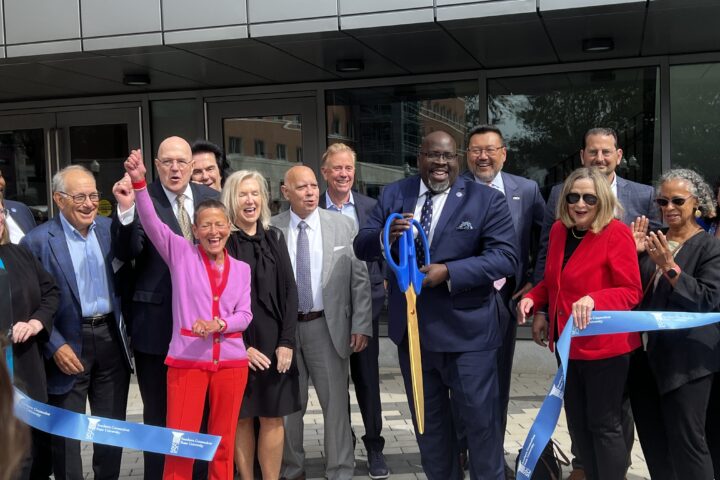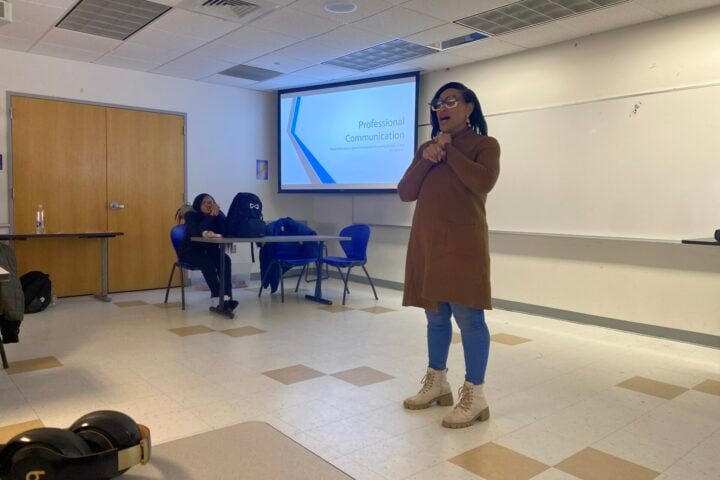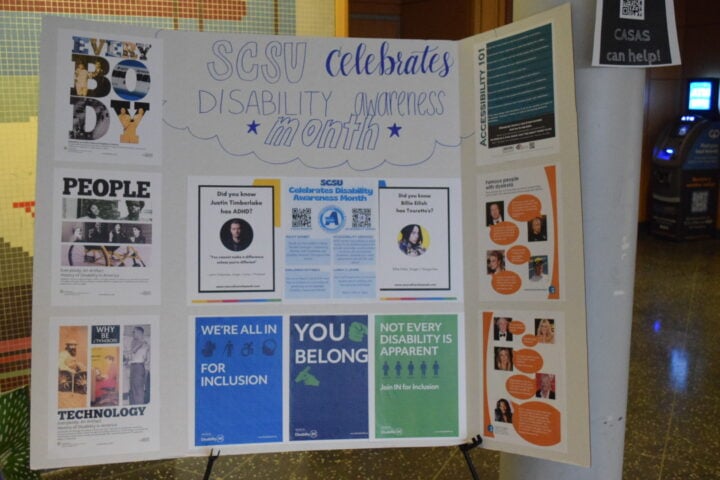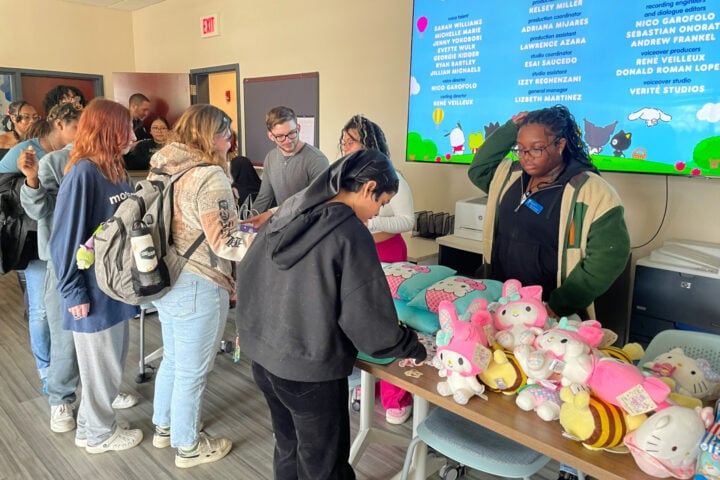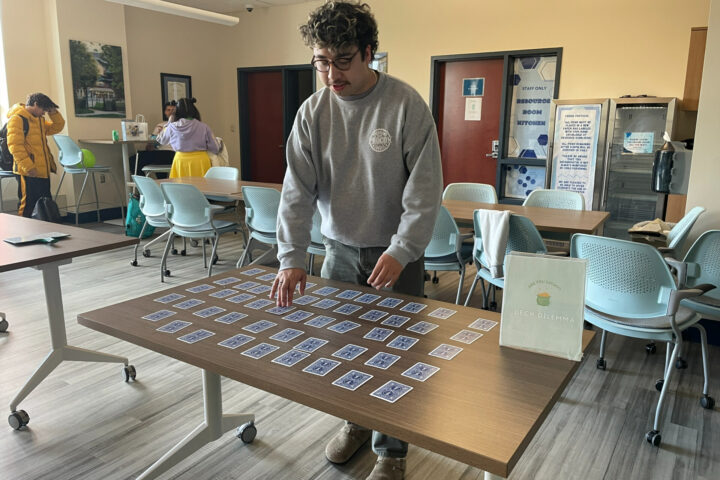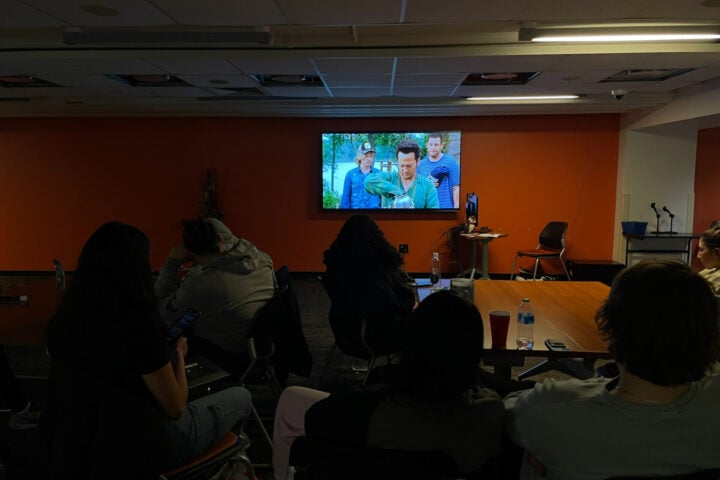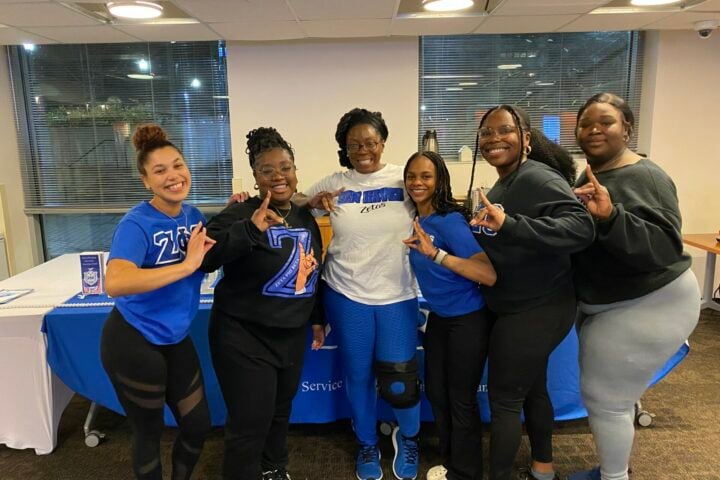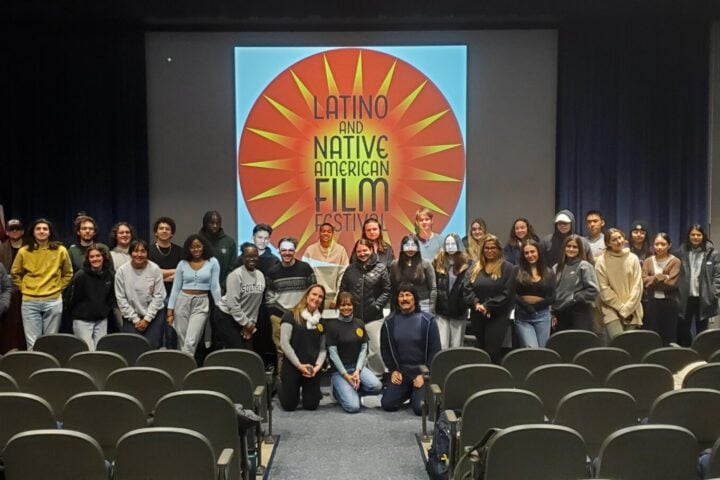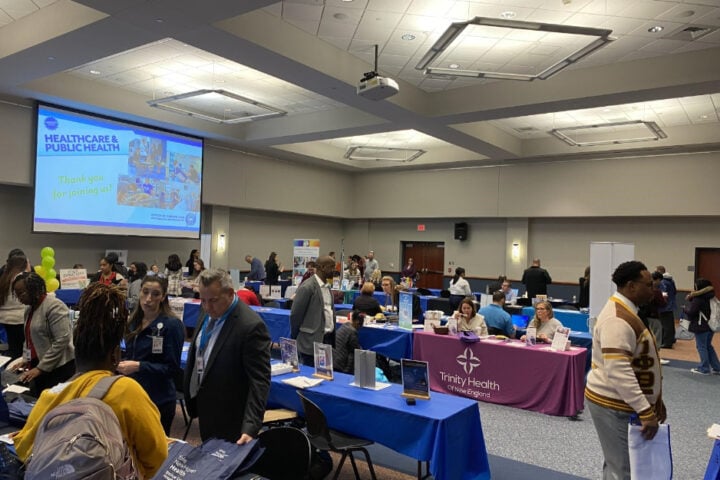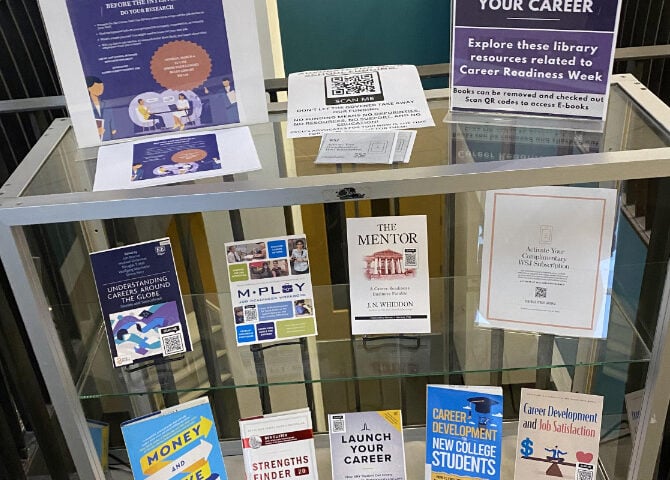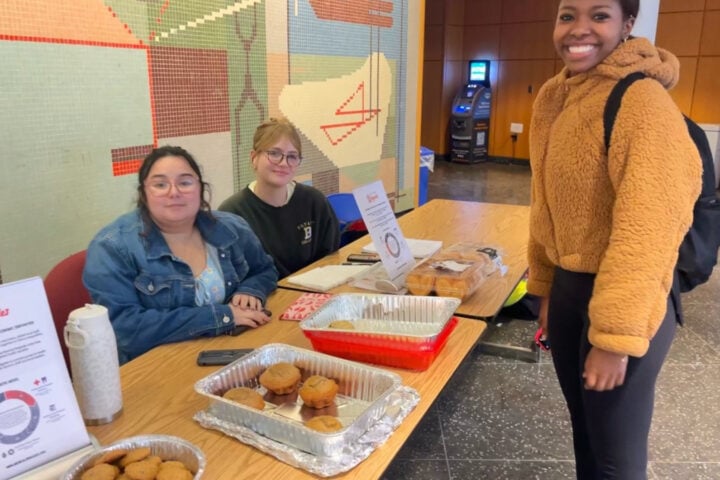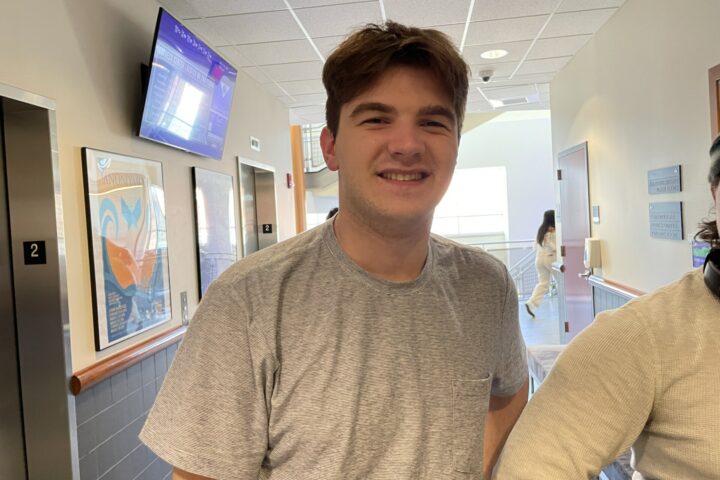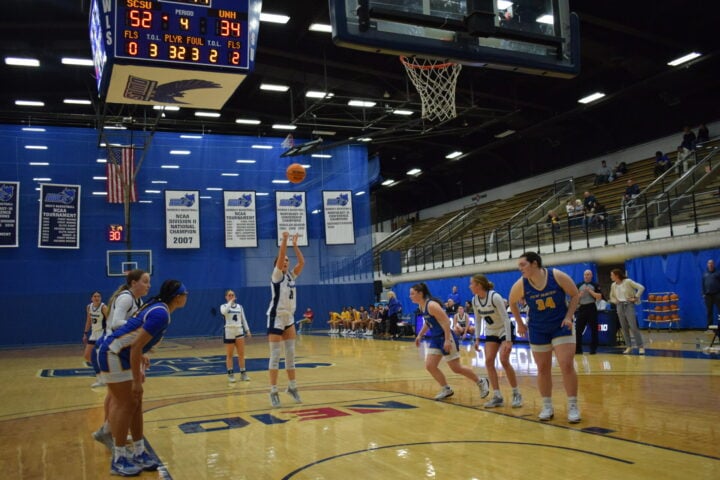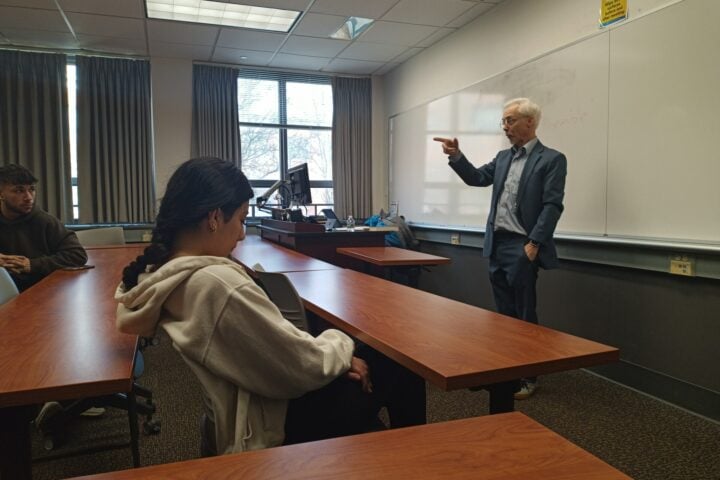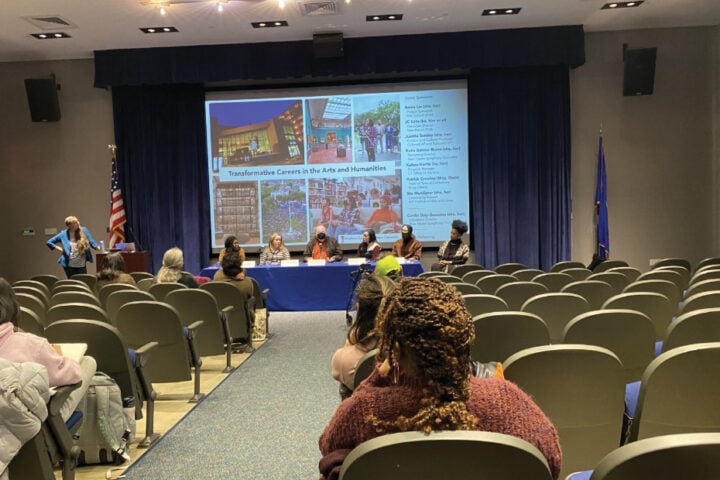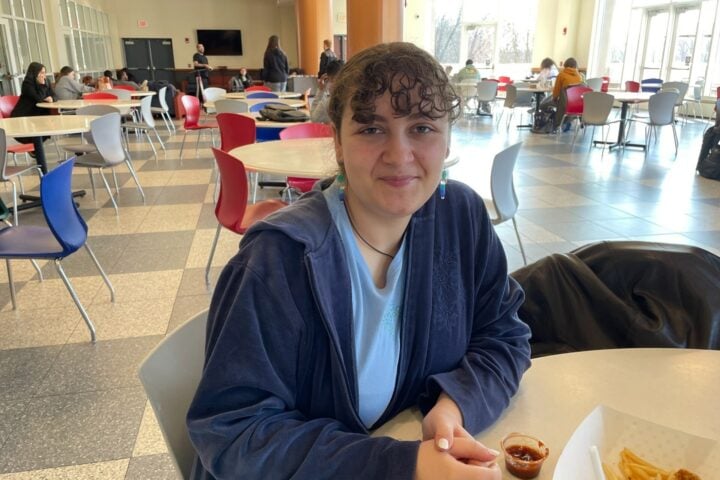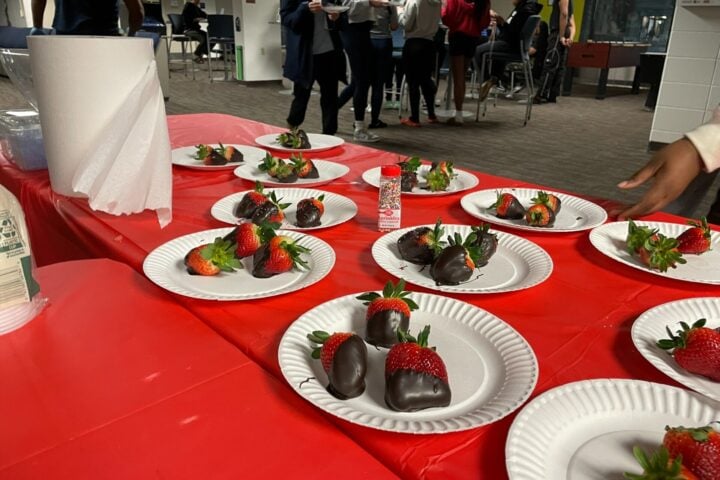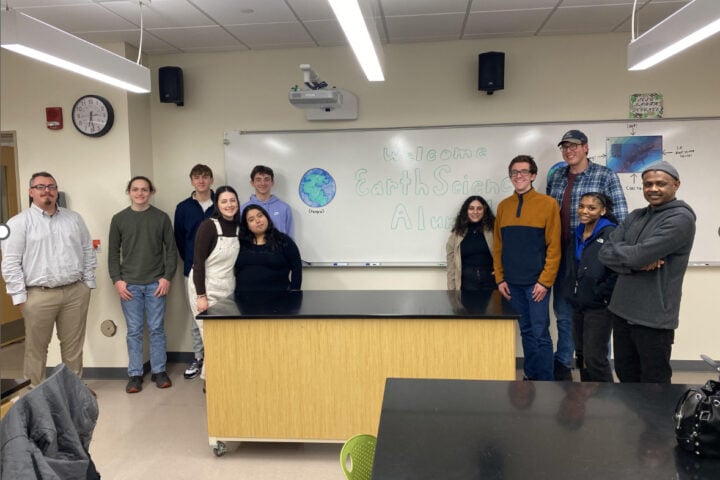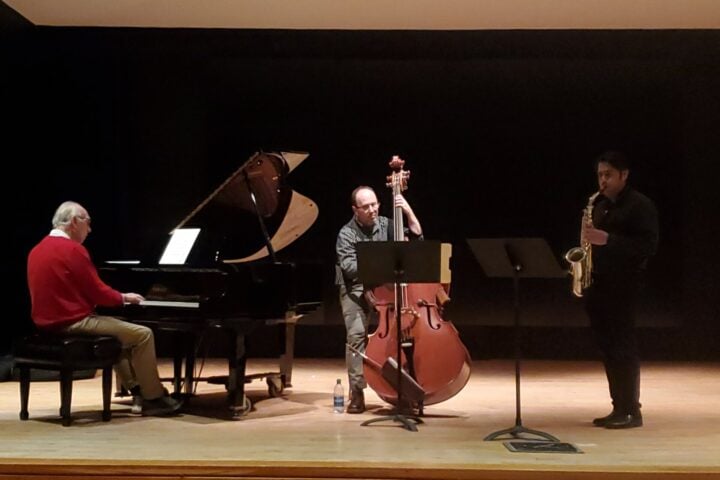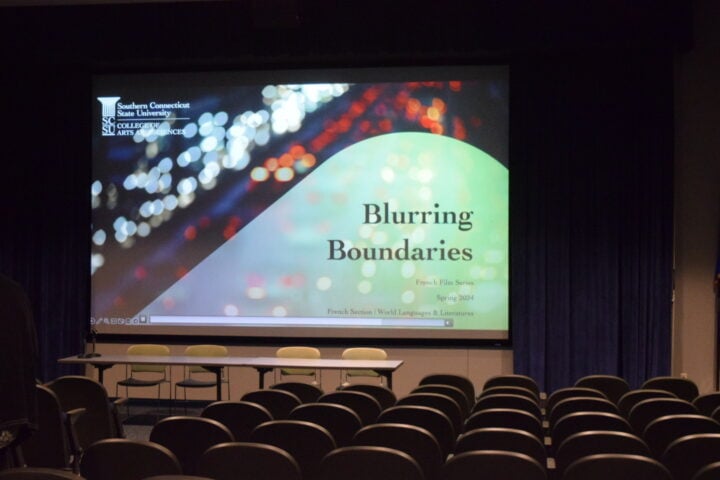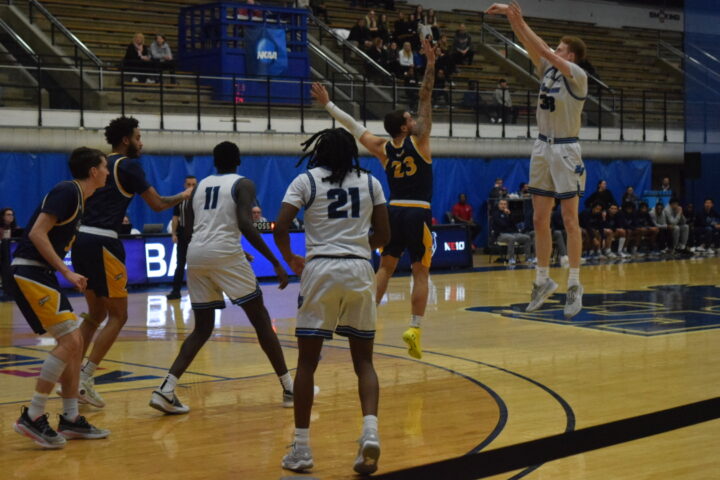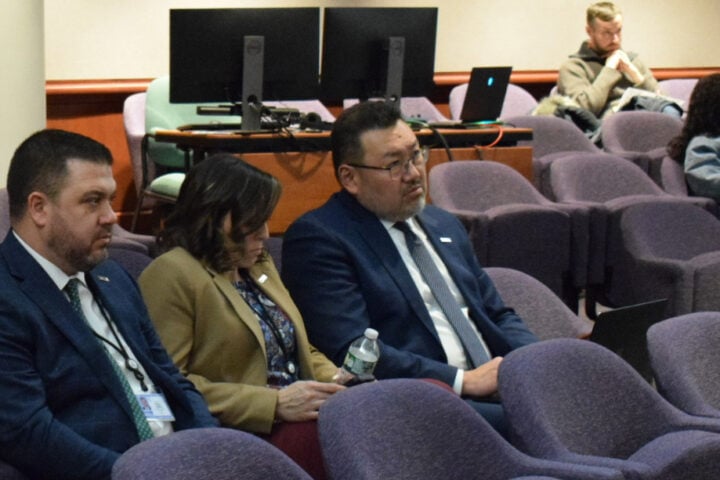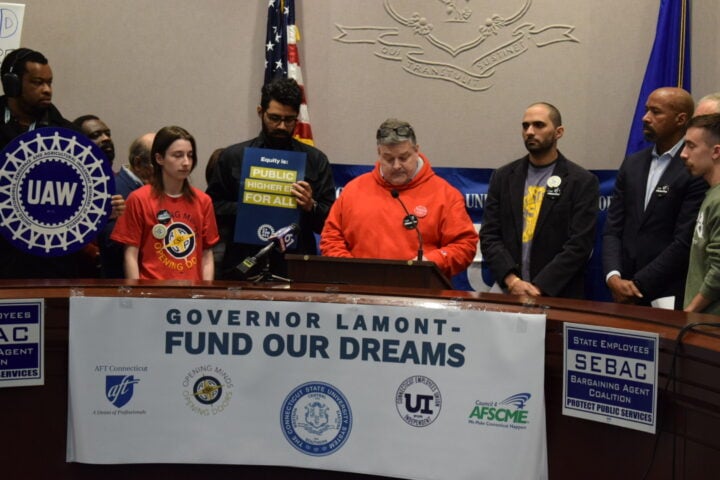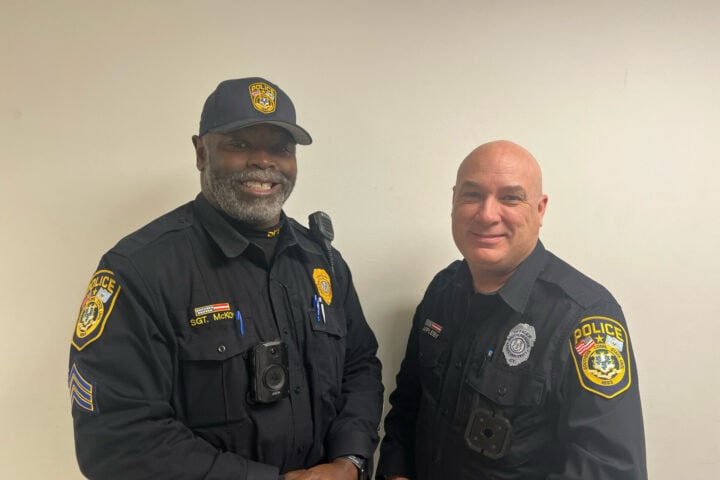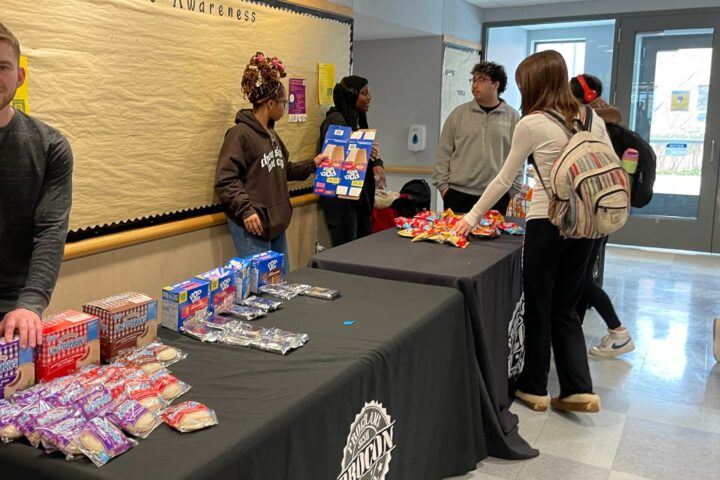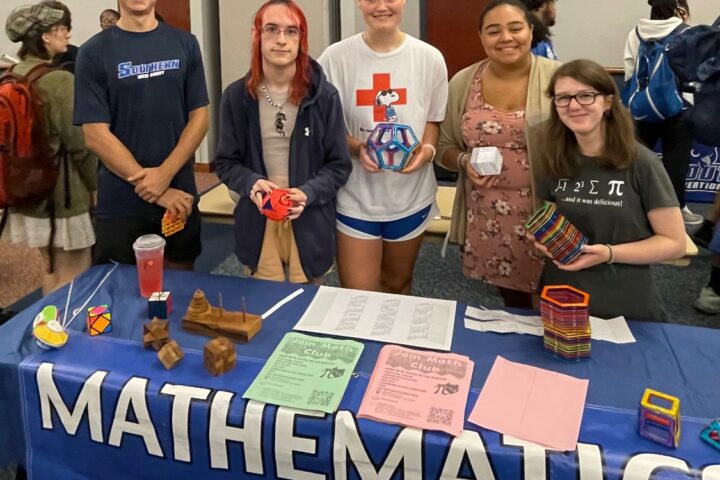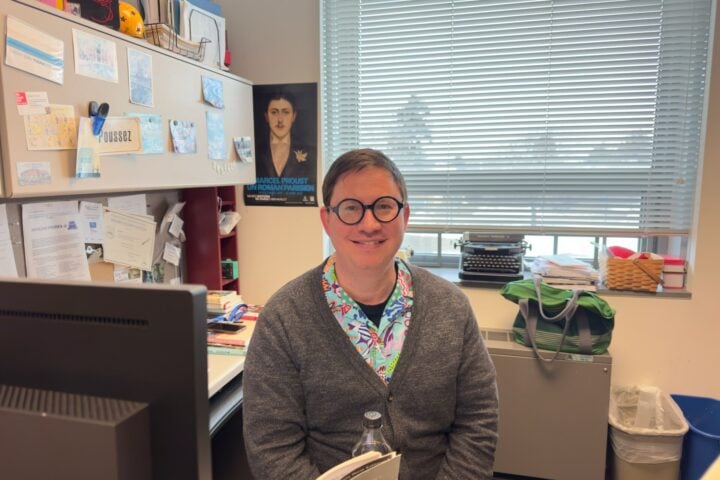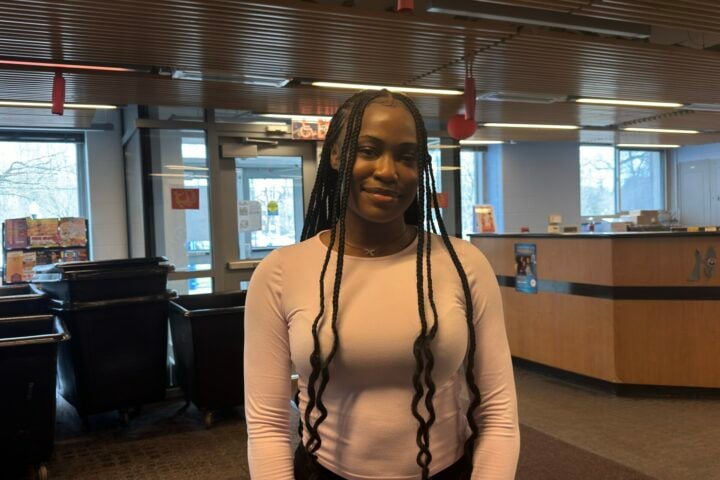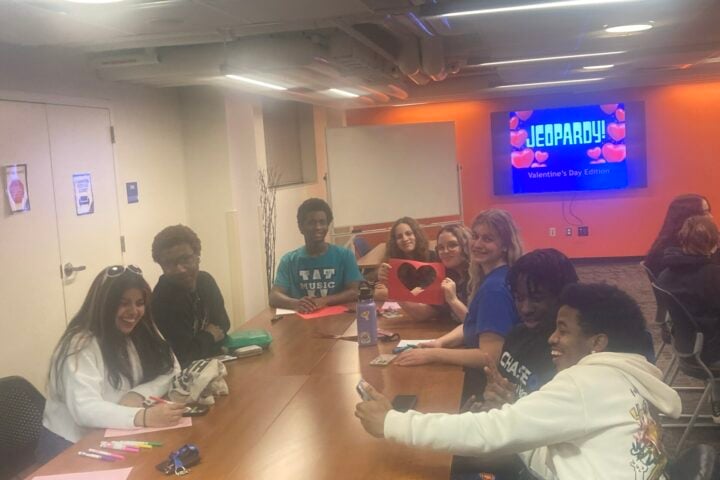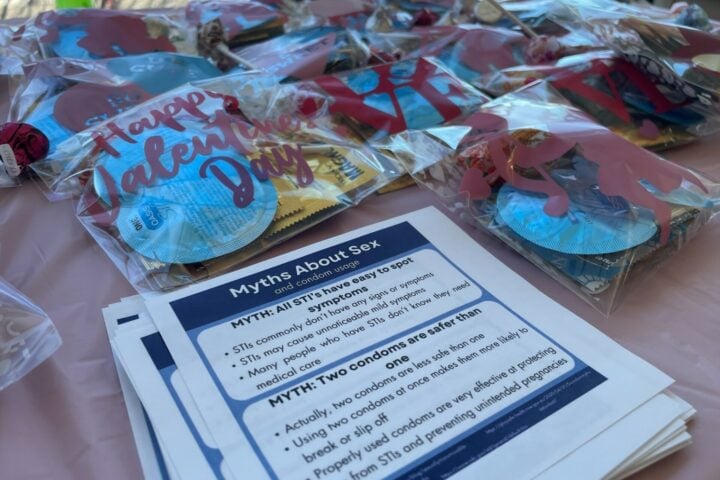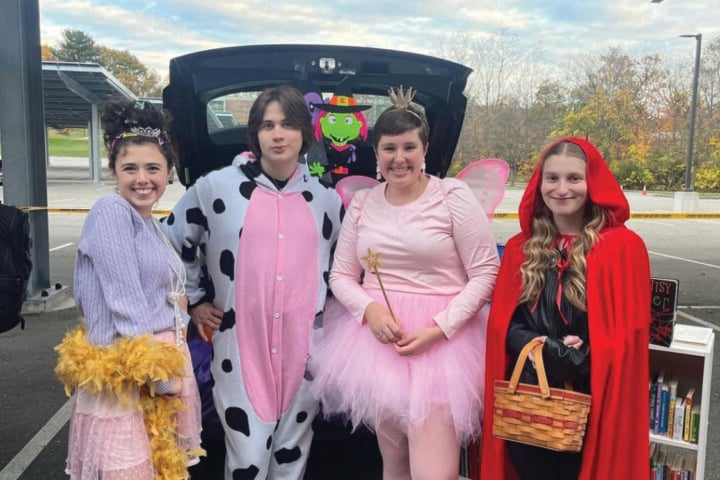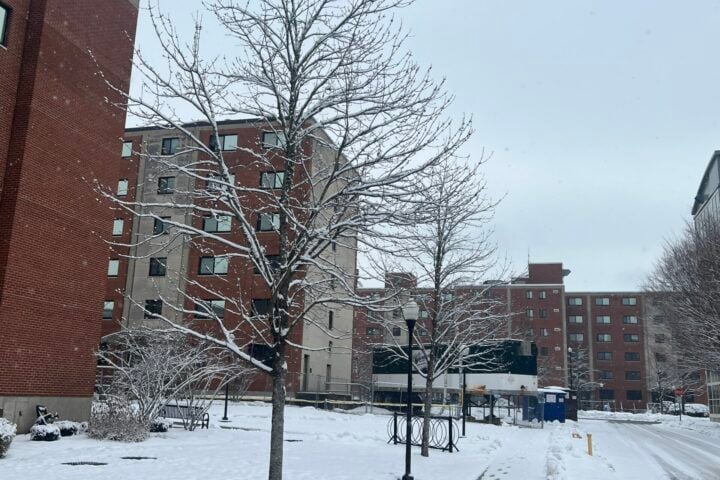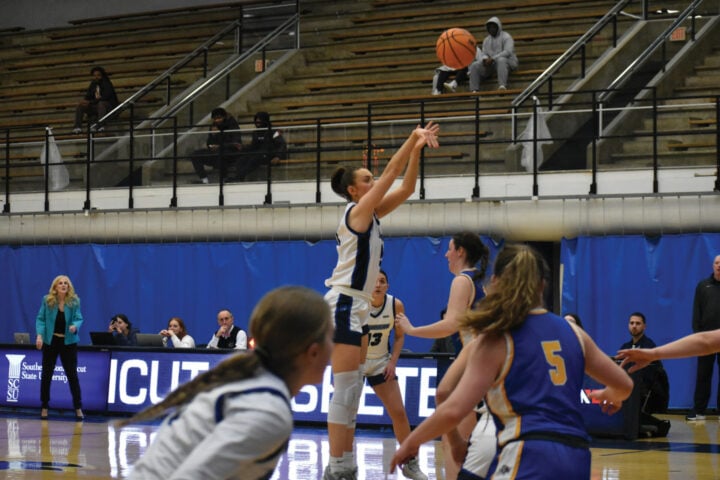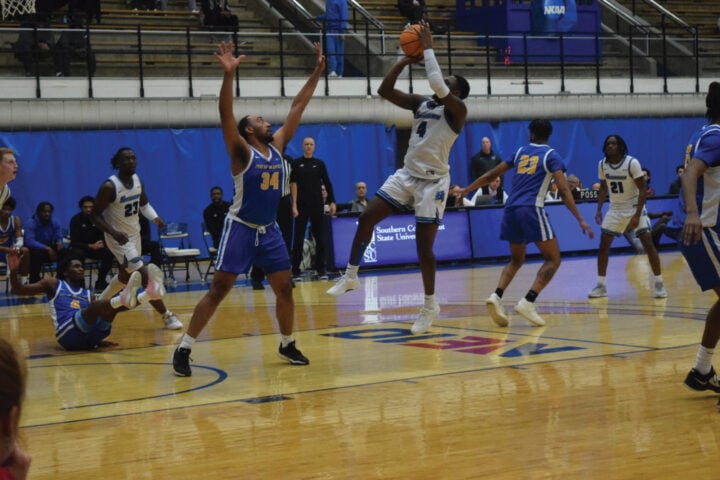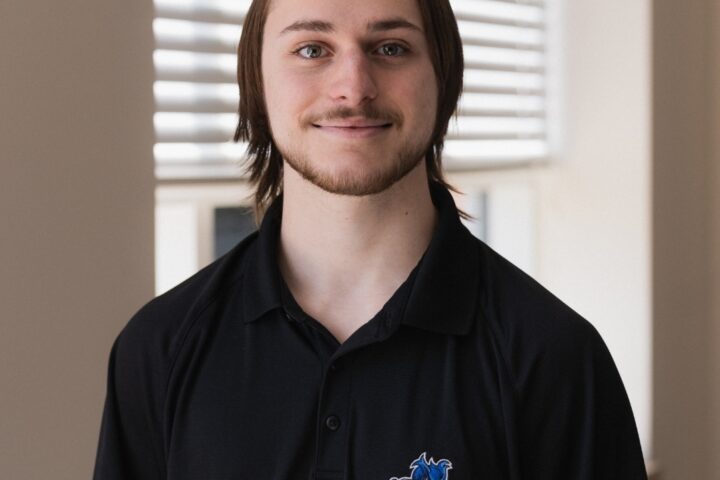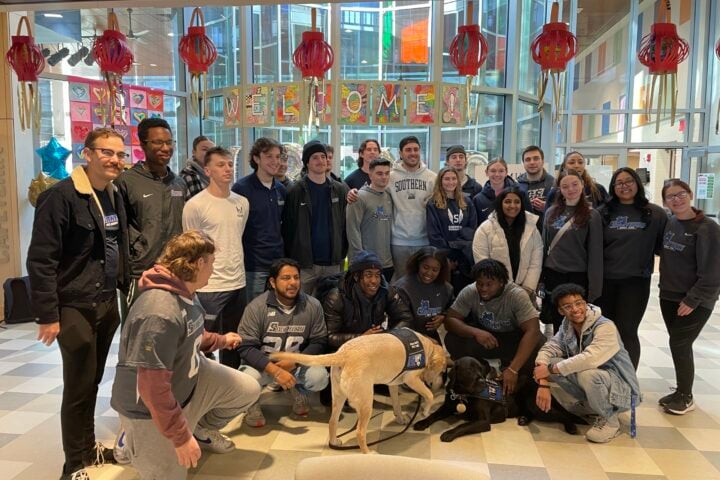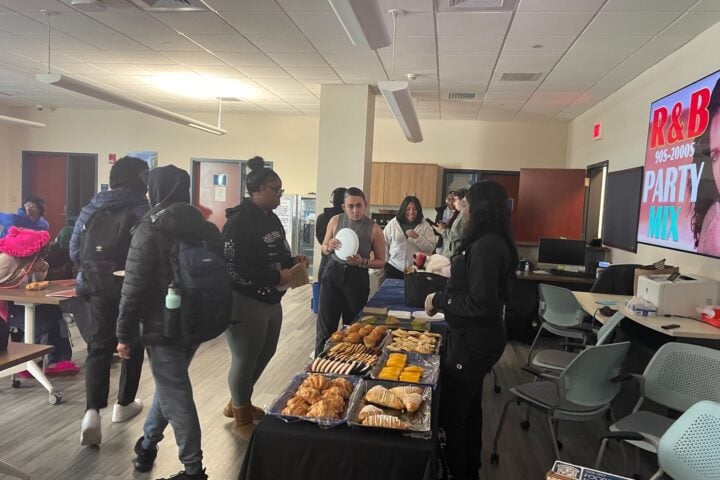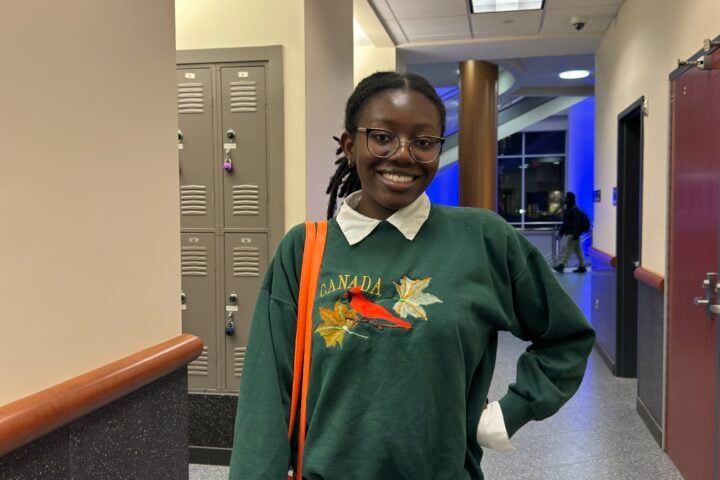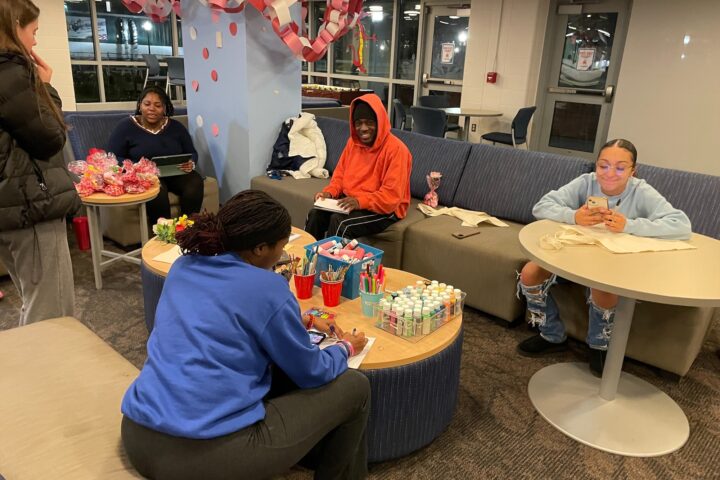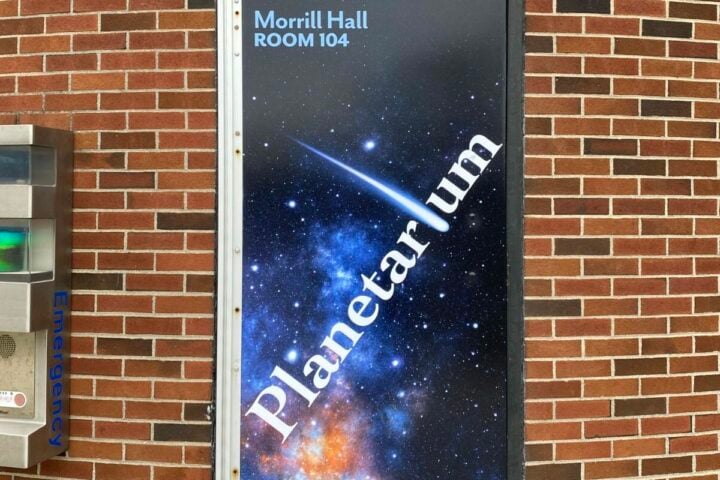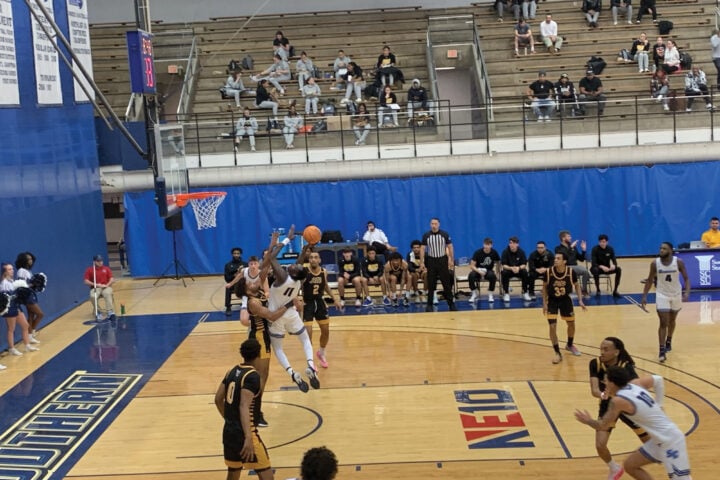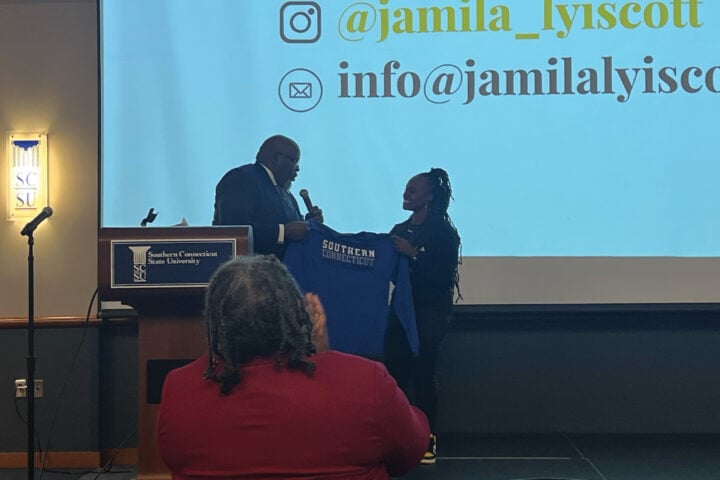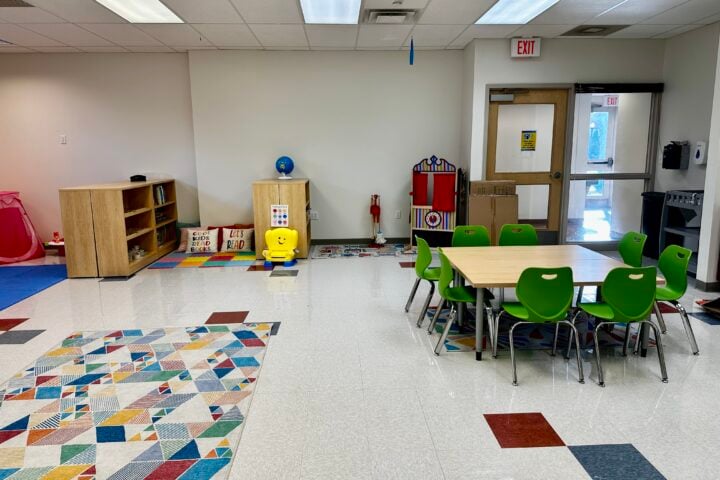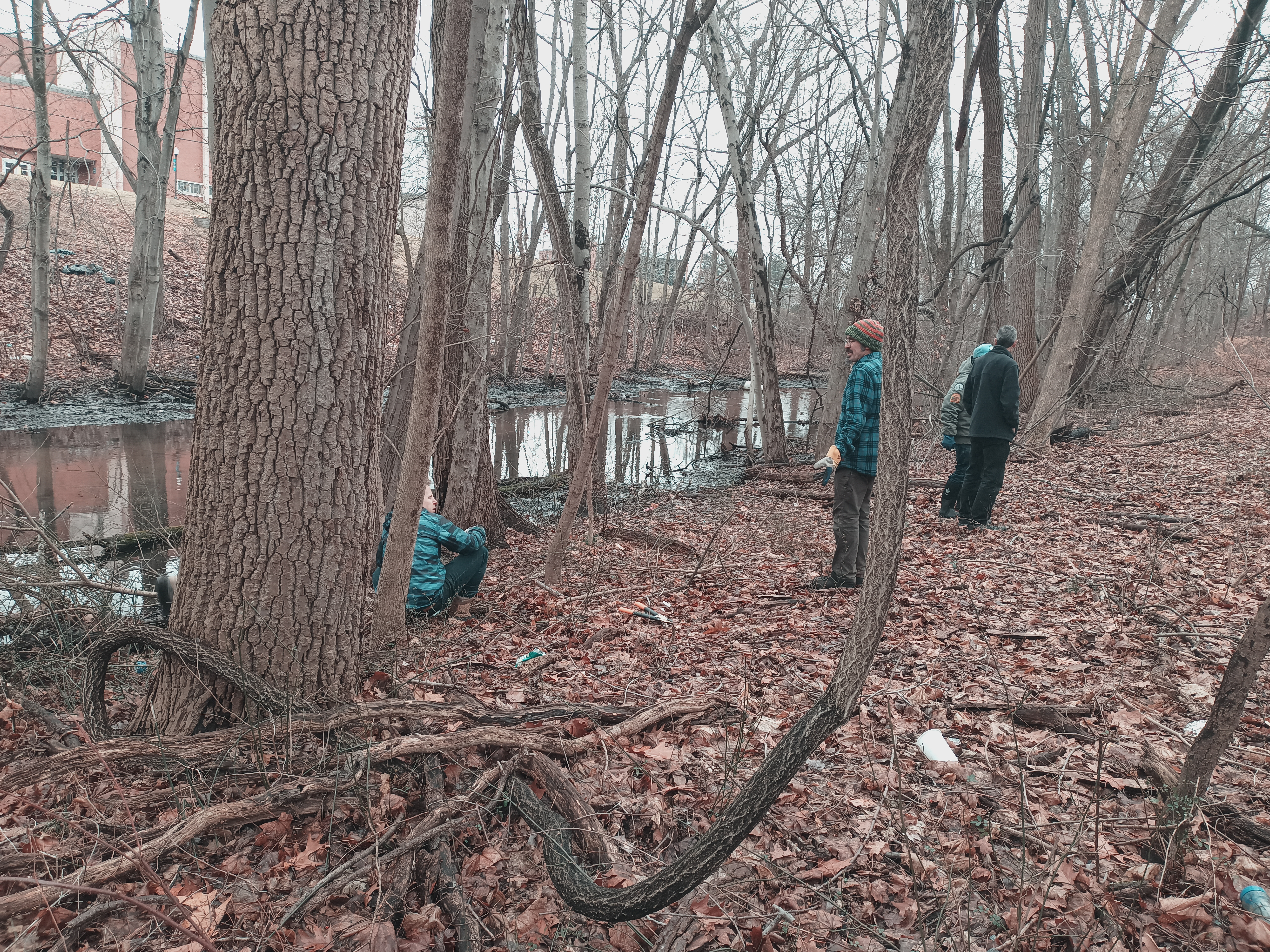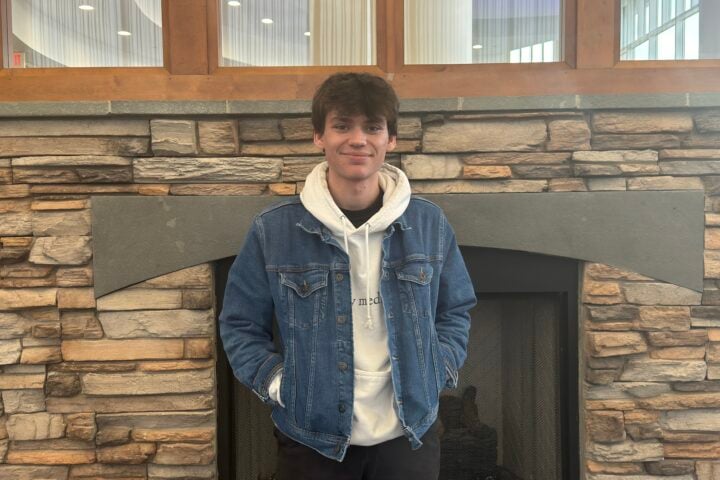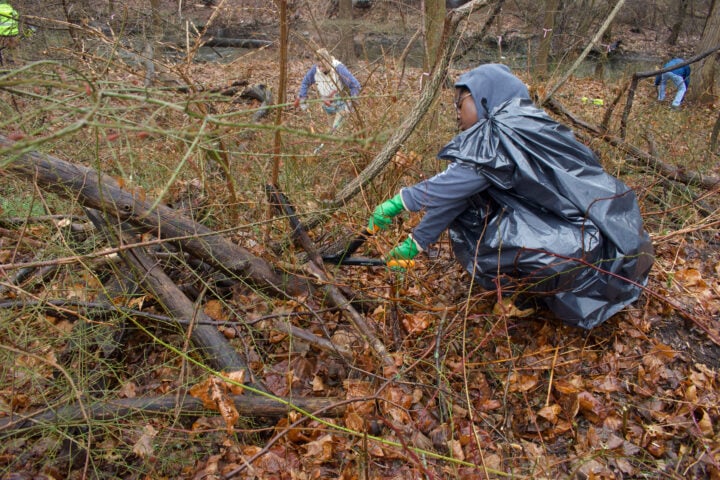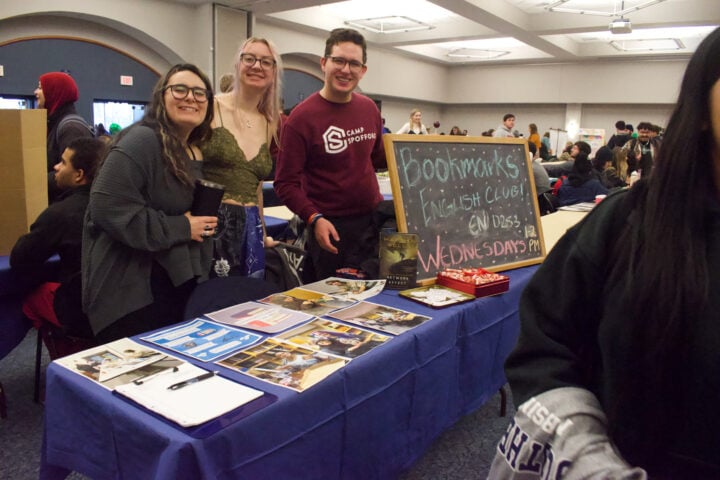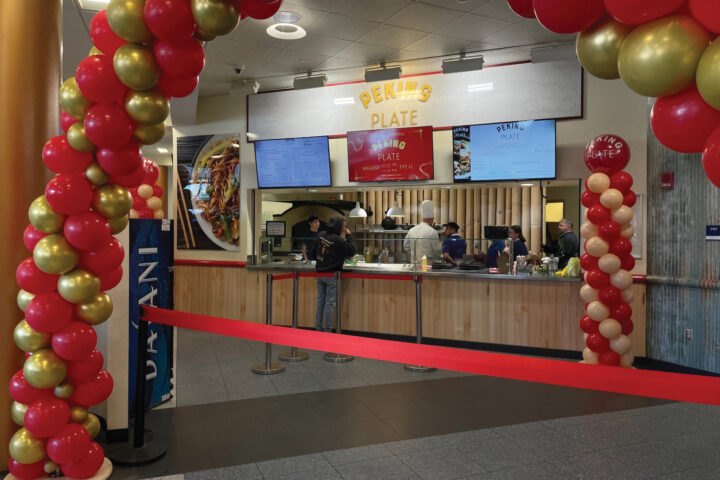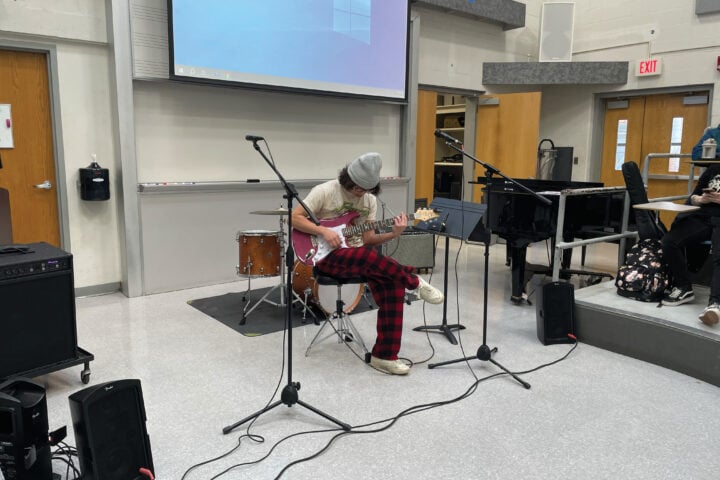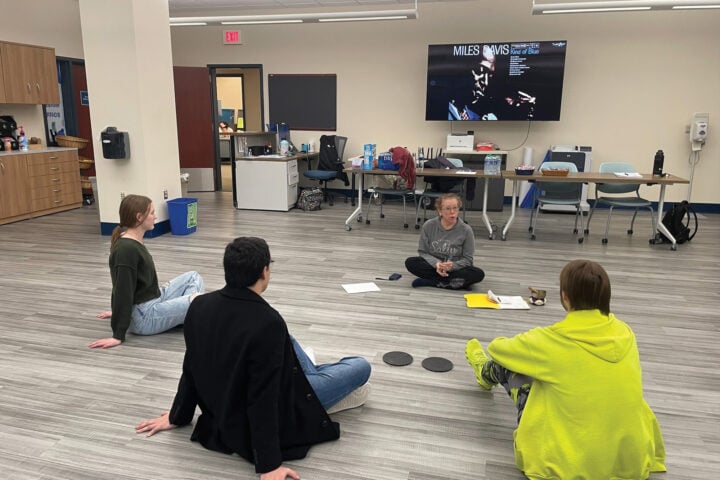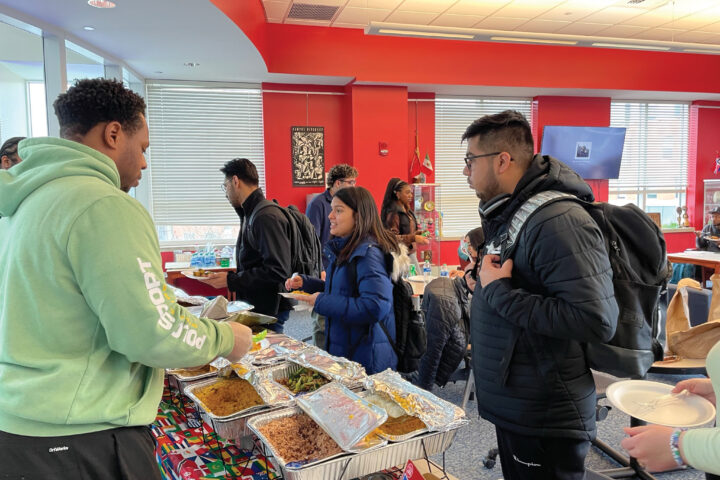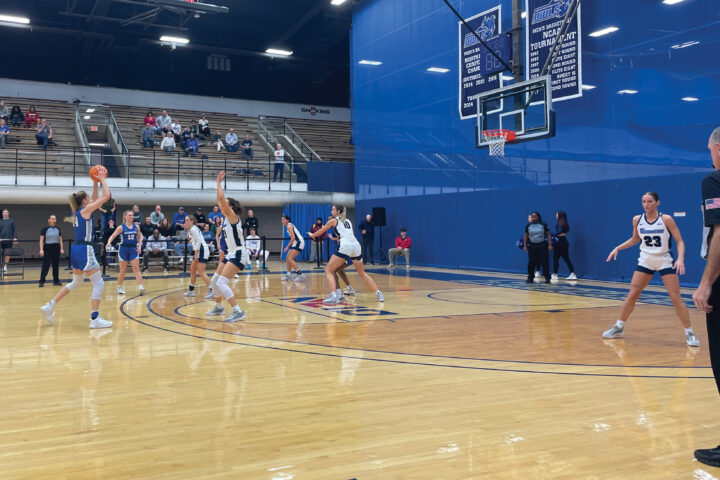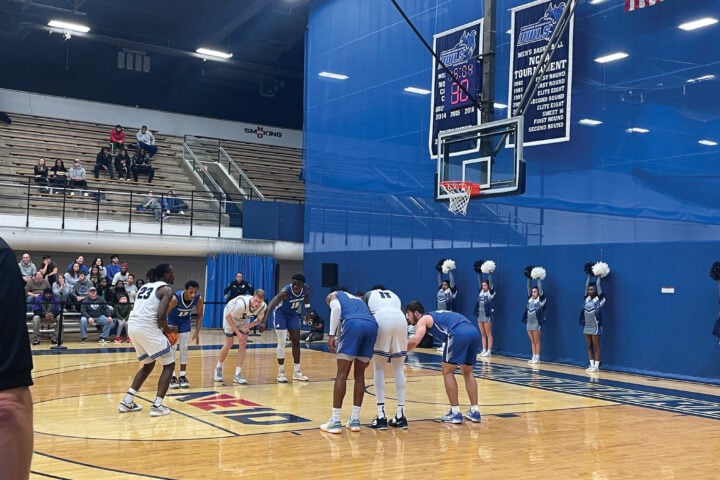Tamonda Griffiths—News Writer & August Pelliccio—Photo Editor
Sustainability Coordinator Suzanne Huminski said food scraps from Connecticut Hall have been sent to a composting facility to be turned into energy since 2017.
“In the first year we sent 45 tons,” said Huminski. Based on numbers recorded since, Huminski said she knew the project could be expanded to the student center food court.
Last week, Kristen Chaney, a graduate intern for the Office of Sustainability held an all-day event in which she set up a three bin system to observe and help students dump their trash into a compost, recycling or a trash can.
Brad Crerar, director of the Adanti Student Center said separating food waste in the back of the student center is easy, but the dining area is a different.
With composting, the food scraps cannot be contaminated said Crerar.
The biggest issue is getting students to separate containers and utensils before tossing everything into a compost bin Crerar said.
Food scraps from Connecticut Hall and the student center are collected, weighed and sent to a food waste recycling center called Blue Earth, according to Chaney.
From there, the compostable scraps are sent to a processing facility in Southington called Quantum Biopower.
Huminski said Quantum Biopower is the first food composting facility in New England to utilize anaerobic digestion, a special decomposition process she described as different from the average home garden compost pile.
“If you have bacteria that will decompose the food for you without oxygen, then the byproduct is methane rather than [carbon dioxide],” Huminski said, “and the methane can be used for heating fuel.”
Additional byproducts of the process include landscaping materials like compost soil and fertilizer that are inherently safer for agricultural use due to their composition of only food products.
“[The Office of Sustainability has] always wanted to implement composting within the student center,” said Chaney, “but they didn’t know the feasibility of it, so I was the worker that was put in to audit how to do it and the feasibility of it, and here we are.”
Several years ago, Huminski said, legislature passed regulations mandating operations over a certain threshold of food waste to dispose properly of it within 20 miles of a composting facility.
“Universities are not required to do that, but we wanted to do that as part of our climate action plan,” Huminski said.
The conversations about feasibility, Chaney said, had been taking place for years even when she was an undergraduate in 2014.
“It’s always been a question as the feasibility, as [in]— can the students do it,” said Chaney, “and if the students are even having enough waste.”
The university was one of the first customers for Quantum Biopower, according to Huminski, and were in contact with them before they even opened.
In addition to the environmental benefit, Huminski said the school is rewarded with a financial benefit for the initiative as well.
Between the transportation charges, and payment to the facility, food waste sent to be composted costs at least 20% less than traditional waste management, pound by pound.
Photo Credit: August Pelliccio

